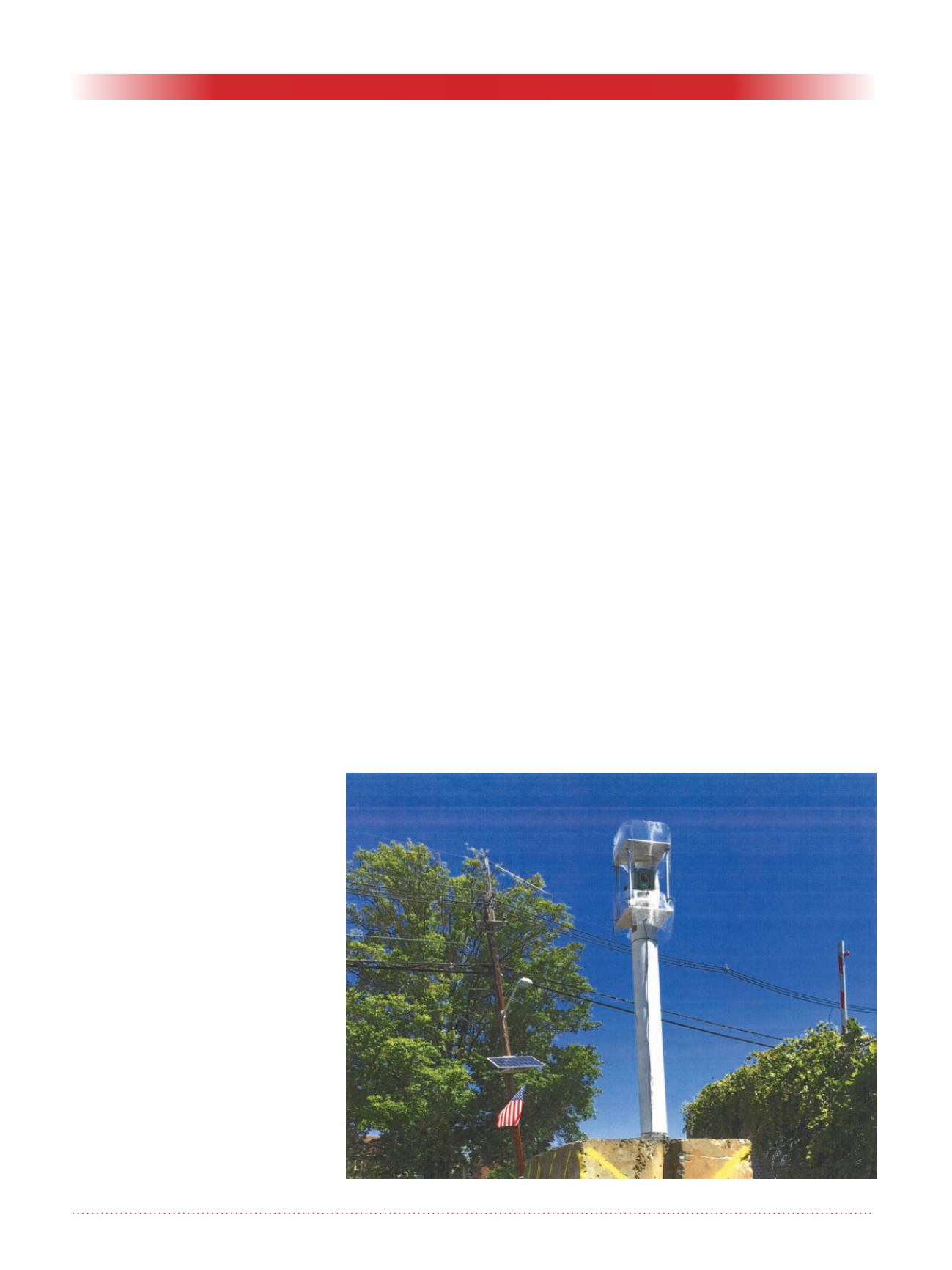
30
Geotechnical News • December 2015
GEOTECHNICAL INSTRUMENTATION NEWS
Qualifications of the robotic total station construction
monitoring professional
Douglas Roy and Jonathan Stuhl
Introduction
The use of robotic total stations
(RTS), also referred to as automated
motorized total stations (AMTS), has
become more and more prevalent in
modern construction related monitor-
ing programs. This increase comes
from realization by practitioners to
the cost and efficiency benefits over
manually survey monitoring as well
as through contract specifications
from owners and engineers to pro-
vide tighter tolerances and quicker
response times. With the gap closing
(or widening) between North Ameri-
can Professional Land Surveyors and
Professional Engineers regarding the
use of RTS units, questions arise as the
necessary background and experience
required for practitioners to effectively
design, as well as run these systems
and manage the data they create.
Although this article should be of
interest to all professionals involved
in RTS technology and usage, it is
particularly intended to guide owners,
engineers and specification writ-
ers tasked with the preparation of
specifications on projects where RTS
technology will be utilized.
RTS for construction monitoring
In the early twenty-first century the
improvements in telecommunications
along with integration of robotics into
the total station brought about the pos-
sibility of using these RTS units for
remote monitoring. A total station that
normally required a survey technician
or transit man to run could now be
controlled remotely and data sent to a
remote location for plotting and analy-
sis. With hardline communication and
power connections an RTS unit could
be installed in a location possibly inac-
cessible to a survey crew and no lon-
ger require untimely access in order to
provide 3D survey monitoring infor-
mation, see Figure 1. In addition to the
access issues this system overcame, it
introduced a level of high accuracy/
high volume measurements not previ-
ously available. Measurement cycles
were completed and data returned
for review within short minutes and
the process completed electronically
heavily limiting the human error side
of survey monitoring. Continuous
changes in technology have led to the
wireless alternative of the RTS where
a wireless cellular modem is used to
maintain communications and solar
panels are used to power the system.
As the technology of RTS has become
more accessible the use of the instru-
ments in monitoring for construc-
tion large and small has increased.
When initially introduced the cost of
these systems was prohibitive to the
point that only large scale “mega”
projects could find the improvement
outweighing the cost. Today the RTS
monitoring solution is prolific in many
construction venues from tunnels and
bridges to high rise sky scrapers and
dams to even residential construction
in urban environments.
Recent contract specification
requirements
As the value of RTS monitoring was
evident and the desire for increased
monitoring data found appeal with
owners and engineers, some modi-
fications to contract specifications
were expected. Specifications regard-
ing frequency of measurements and
expectations of data delivery timelines
were updated. No longer was there a
one day turn around for a survey crew
to complete field measurements, return
Figure 1. Typical RTS installation.


